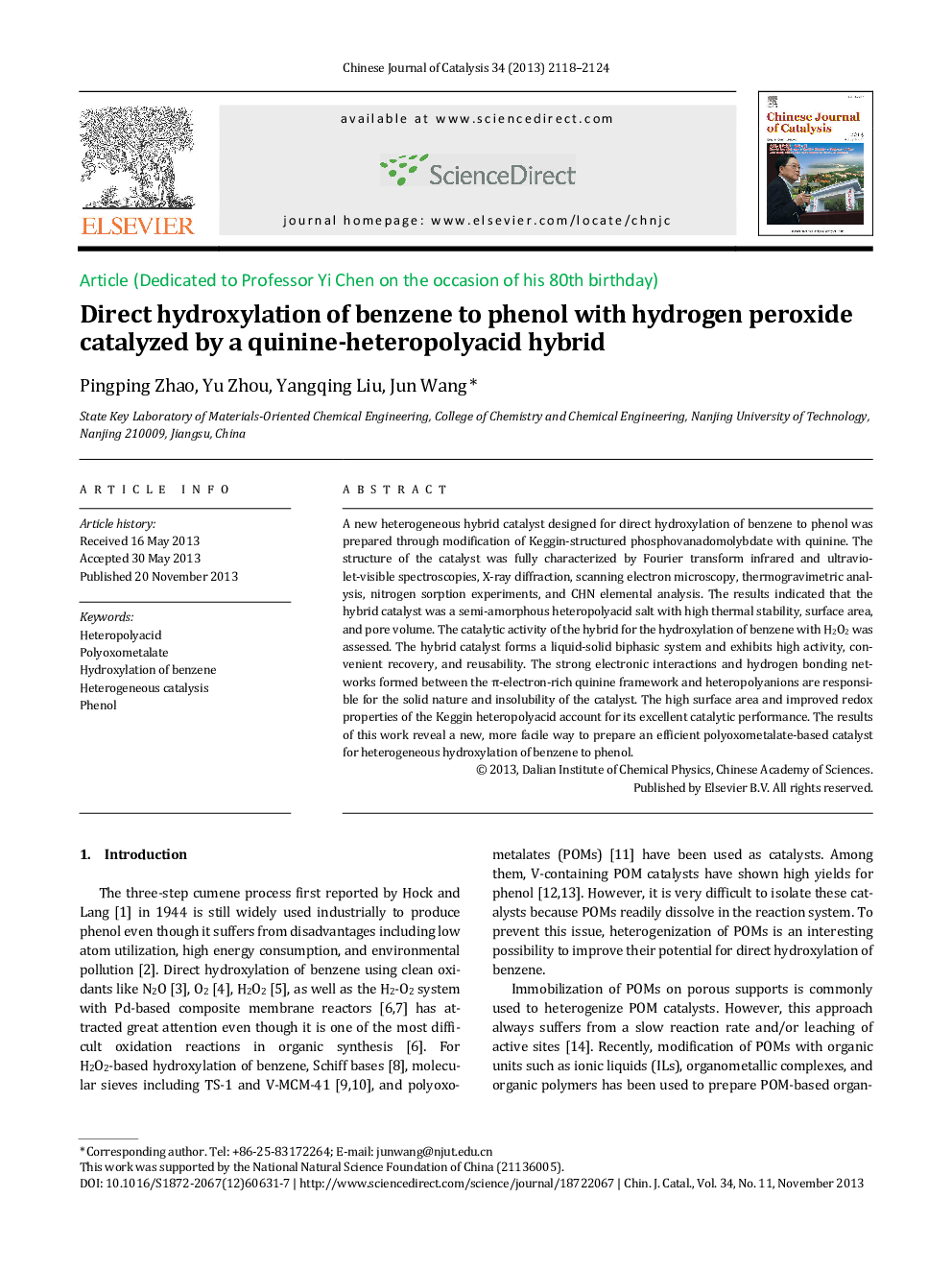| Article ID | Journal | Published Year | Pages | File Type |
|---|---|---|---|---|
| 59917 | Chinese Journal of Catalysis | 2013 | 7 Pages |
A new heterogeneous hybrid catalyst designed for direct hydroxylation of benzene to phenol was prepared through modification of Keggin-structured phosphovanadomolybdate with quinine. The structure of the catalyst was fully characterized by Fourier transform infrared and ultraviolet-visible spectroscopies, X-ray diffraction, scanning electron microscopy, thermogravimetric analysis, nitrogen sorption experiments, and CHN elemental analysis. The results indicated that the hybrid catalyst was a semi-amorphous heteropolyacid salt with high thermal stability, surface area, and pore volume. The catalytic activity of the hybrid for the hydroxylation of benzene with H2O2 was assessed. The hybrid catalyst forms a liquid-solid biphasic system and exhibits high activity, convenient recovery, and reusability. The strong electronic interactions and hydrogen bonding networks formed between the π-electron-rich quinine framework and heteropolyanions are responsible for the solid nature and insolubility of the catalyst. The high surface area and improved redox properties of the Keggin heteropolyacid account for its excellent catalytic performance. The results of this work reveal a new, more facile way to prepare an efficient polyoxometalate-based catalyst for heterogeneous hydroxylation of benzene to phenol.
Graphical abstractA quinine-modified phosphovanadomolybdate hybrid is developed as a heterogeneous catalyst for hydroxylation of benzene. The redox properties of the heteropolyanion are improved by quinine, accounting for its excellent catalytic performance.Figure optionsDownload full-size imageDownload as PowerPoint slide
